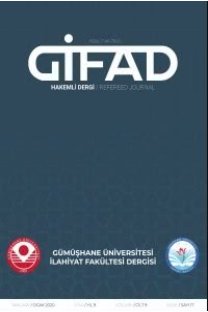TÜRKİYE’DE RADYO ALANINDA YAZILAN LİSANSÜSTÜ TEZLERE YÖNELİK BİR İÇERİK ANALİZİ
Yazılı basından sonra ortaya çıkan, geniş kitlelere ulaşma kabiliyeti yüksek ilk elektromanyetik kitle iletişim aracı olma özelliğini taşıyan radyo, çok uzun yıllar toplumlar üzerindeki etkisini sürdürdü. Ancak, televizyonun ortaya çıkışı ve etki alanının genişlemesiyle birlikte radyoya olan toplumsal ilgi azaldı. Türkiye’de iletişim alanında yazılan ilk lisansüstü tezlerin ortaya çıkışının 1980’lerin ilk yıllarına denk gelmesi, aynı zamanda radyonun popülaritesini çoktan televizyona bıraktığı dönemlerdir. Bu nedenledir ki, Türkiye’de akademik çevrelerde radyo yayıncılığı ile ilgili yapılan çalışmalar, diğer iletişim alanlarının gerisinde kalmıştır. Bu çalışmanın amacı, gelişen teknolojik olanaklarla tüm dünyada yeniden popüler hale gelen radyo yayıncılığının önemini bir kez daha vurgulayarak, Türkiye’deki akademik çevrelerde bir iletişim disiplini olarak radyonun ne oranda sahiplenildiğini, yazılan lisansüstü tezlerin incelemesi üzerinden ortaya koymaktır. YÖK Tez Merkezi üzerinden ulaşılan radyo ile ilgili yazılan tüm lisansüstü tezler; türleri, bağlı oldukları disiplin, yayınlandıkları yıllar, üniversiteler, konuları ve yöntemleri bakımından içerik analizine tabi tutulmuştur. Aynı zamanda, Türkiye’de radyo alanının kapsayıcı anabilim dalları olan Radyo Televizyon ya da Radyo Televizyon Sinema bünyesinde, televizyon ve sinema alanlarında yazılan tezler ile radyo alanında yazılan tezler arasındaki sayısal fark karşılaştırmalı olarak tespit edilmiştir. Bununla birlikte, Türkiye’de radyo alanında yazılan lisansüstü tezleri konuları bakımından uluslararası örnekleriyle karşılaştırabilmek amacıyla, Proquest veri tabanı üzerinden 2010-2017 yılları arasında dünyada İngilizce dilinde radyo ile ilgili yazılan 105 lisansüstü tez incelenmiş ve en çok çalışılan alt konular tespit edilmiştir. Araştırmanın sonucunda, Türkiye’de radyo yayıncılığı ile ilgili konuların, bir iletişim disiplini olarak yeterince ele alınmadığı, özellikle akademik uzmanlığın ileri seviyesi olan doktora aşamasında araştırmacılar tarafından çok az önemsendiği görülmüştür. Çalışılan alt konular bakımından da dünyadaki çalışmalardan ayrı bir tavır benimsendiği tespit edilmiştir.
Anahtar Kelimeler:
Radyo, lisansüstü tezler, iletişim disiplini
A CONTENT ANALYSIS RELATED TO POSTGRADUATE THESES ON THE RADIO FIELD IN TURKEY
The radio emerging after the printed media, as the first electromagnetic mass communication tool capable of reaching large masses has been influencing communities for many years. However, with the emergence of television and the expansion of its influence, the public attention on the radio has diminished. The first postgraduate theses written in the field of communication in Turkey coincided with the first years of the 1980s. These years were also the times that the radio had already left its popularity on TV. For this reason, the studies related to the radio broadcasting in academic circles in Turkey, have lagged behind the other fields of communication. The aim of this study is to once again emphasize the importance of radio broadcasting that has become popular again all over the world with developing technological possibilities, and also is to demonstrate to what extent the radio is considered important as a communication discipline by academic circles in Turkey through the examination of the postgraduate theses. All the postgraduate theses written about the radio broadcasting being reached via YÖK Thesis Database were subjected to content analysis considering their types, discipline, years of publication, universities, topics, and methods. At the same time, the quantitative differences between the theses about radio, television and film within the scope of Radio and Television or Radio, Television and Film that both are inclusive departments of radio field in Turkey have been identified as comparative. Moreover, in order to compare with theses in Turkey and abroad in terms of their subjects, the 105 postgraduate theses written about radio in the world between 2010-2017 on the Proquest database were reviewed and the most studied sub-topics were determined. As a result of the study, it is seen that the topics related to radio broadcasting in Turkey are not adequately dealt with as a communication discipline. Radio is of limited importance for researchers, especially at the doctoral phase, which is the advanced level of academic expertise. In terms of the sub-topics studied, it has been determined that the researchers adopt a different approach from the studies in the world.
Keywords:
Radio, postgraduate theses, communication discipline,
___
- Ahern, S. (2011). Making Radio. 3rd. ed. Australia, Allen&Unwin.
- Buckley, S. (2000). Democracy and popular communication in the digital age. International Journal of Cultural Studies. 3 (2). 180-187.
- Cantril, H. & Allport, G.W. (1935). The Psychology of Radio. New York: Harper&Brothers.
- Chantler, P., Stewart, P. (2003). Basic Radio Journalism, UK, Focal Press.
- Fleming, C. (2002). The Radio Handbook. 2nd ed. London and New York, Routledge.
- Fraser, C. & Restrepo-Estrada, S. (2002). Community Radio for Change and Development. Society for International Development. 45 (4), 69-73.
- Gimmler, A. (2001). Deliberative democracy, the public sphere and the internet. Philosophy & Social Criticis. 27 (4), 21-39.
- Keith, M. C. (2010). The Radio Station. 8th. ed. USA, Focal Press.
- Madamombe, I. (2005). Community radio: a voice for the poor. Better local communications can boost development, democracy. African Renewal: United Nations Department of Public Information, 19, 4–5.
- McLeish, R. (2005). Radio Production. 5th. ed. UK, Focal Press.
- Priestman, C. (2013). Web Radio: Radio Production for Internet Streaming. New York and London: Focal Press.
- Ross, K. (2004). Political talk radio and democratic participation: caller perspectives on Election Call. Media, Culture and Society. 26 (6), 785-801.
- Siemering, W. (2000). Radio, Democracy and Development: Evolving Models of Community Radio. Journal of Radio Studies. 7 (2), 373-378.
- Tacchi, J. (2000). The need for radio theory in the digital age. International Journal of Cultural Studies. Sage Pub. 3 (2), 289-298.
- ISSN: 2146-3301
- Yayın Aralığı: Yılda 2 Sayı
- Başlangıç: 2011
- Yayıncı: Mustafa Cankut
Sayıdaki Diğer Makaleler
BOURDIEU’NUN İLİŞKİSEL YAKLAŞIMI IŞIĞINDA HALKLA İLİŞKİLER VE GÜÇ
“SEMT BİZİM EV KİRA” 2000 SONRASI TÜRK SİNEMASINDA MAHALLE, FUTBOL VE KENTSEL DÖNÜŞÜM
TÜRKİYE’DE RADYO ALANINDA YAZILAN LİSANSÜSTÜ TEZLERE YÖNELİK BİR İÇERİK ANALİZİ
TELEVİZYON REKLAMLARINDA ÇOCUK MAHREMİYETİNİN İHLALİ
GAYRİ RESMİ İLETİŞİMİN ÖRGÜTSEL BAĞLILIK ÜZERİNDEKİ ETKİSİ
İbrahim Sani MERT, Mustafa BEKMEZCİ, Kemal EROĞLUER
KUZEY KIBRIS TÜRK CUMHURİYETİ MEDYASINDA ETİK SORUNSALI: KÜRTAJ DAVASI HABERLERİ ÖRNEĞİ
